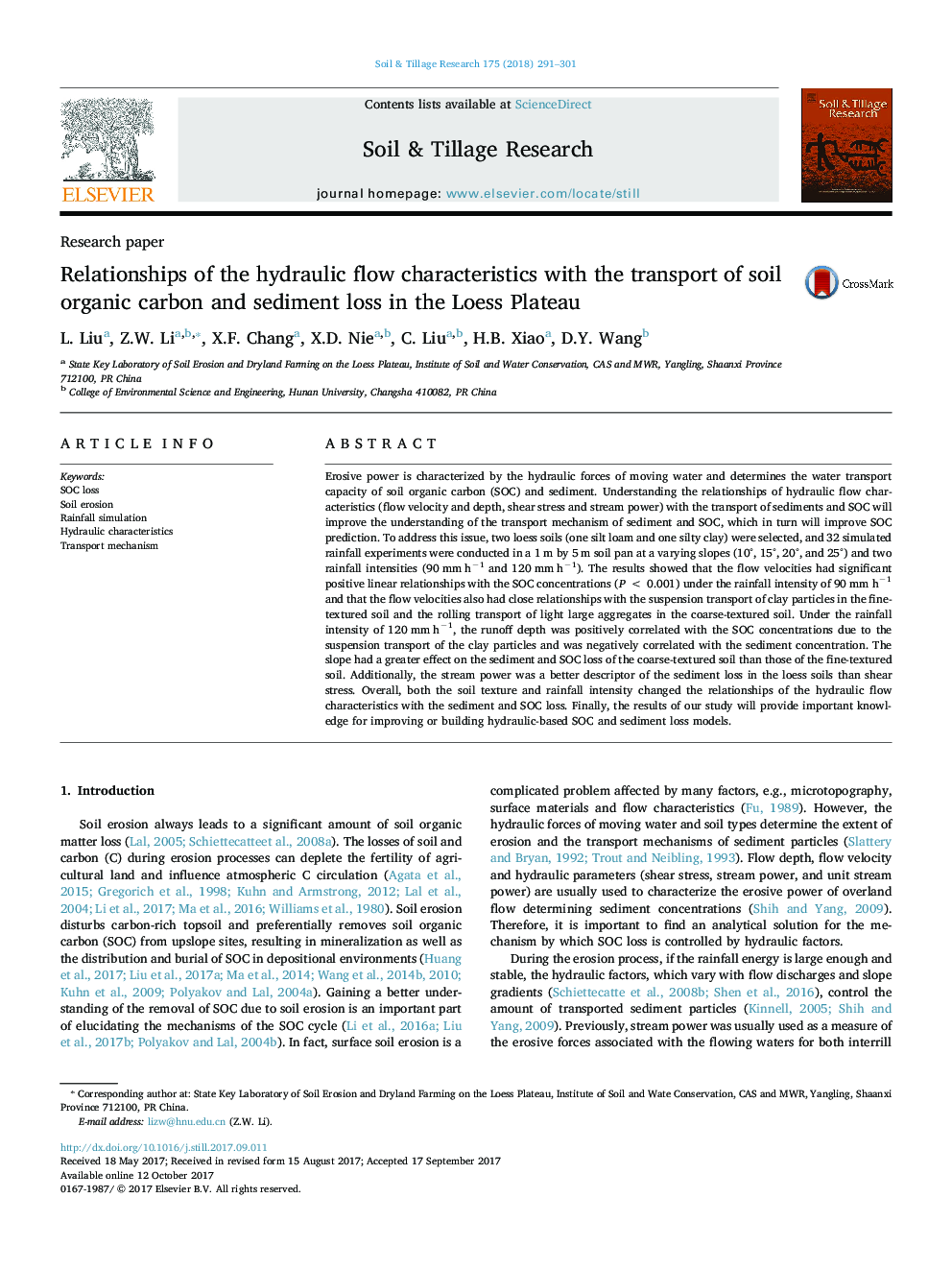| Article ID | Journal | Published Year | Pages | File Type |
|---|---|---|---|---|
| 4927444 | Soil and Tillage Research | 2018 | 11 Pages |
â¢Soil organic carbon (SOC) concentration has a significant positive linear relationship with flow velocity.â¢Flow depth is significantly associated with SOC concentration when intense rill erosion occurs.â¢Flow characteristics have close relationships with the transport of sediment particles in loess soils.â¢Stream power is a good descriptor of the sediment loss from loess soils.â¢Rainfall intensities change the relationships of hydraulic characteristics with sediment and SOC loss.
Erosive power is characterized by the hydraulic forces of moving water and determines the water transport capacity of soil organic carbon (SOC) and sediment. Understanding the relationships of hydraulic flow characteristics (flow velocity and depth, shear stress and stream power) with the transport of sediments and SOC will improve the understanding of the transport mechanism of sediment and SOC, which in turn will improve SOC prediction. To address this issue, two loess soils (one silt loam and one silty clay) were selected, and 32 simulated rainfall experiments were conducted in a 1 m by 5 m soil pan at a varying slopes (10°, 15°, 20°, and 25°) and two rainfall intensities (90 mm hâ1 and 120 mm hâ1). The results showed that the flow velocities had significant positive linear relationships with the SOC concentrations (P < 0.001) under the rainfall intensity of 90 mm hâ1 and that the flow velocities also had close relationships with the suspension transport of clay particles in the fine-textured soil and the rolling transport of light large aggregates in the coarse-textured soil. Under the rainfall intensity of 120 mm hâ1, the runoff depth was positively correlated with the SOC concentrations due to the suspension transport of the clay particles and was negatively correlated with the sediment concentration. The slope had a greater effect on the sediment and SOC loss of the coarse-textured soil than those of the fine-textured soil. Additionally, the stream power was a better descriptor of the sediment loss in the loess soils than shear stress. Overall, both the soil texture and rainfall intensity changed the relationships of the hydraulic flow characteristics with the sediment and SOC loss. Finally, the results of our study will provide important knowledge for improving or building hydraulic-based SOC and sediment loss models.
